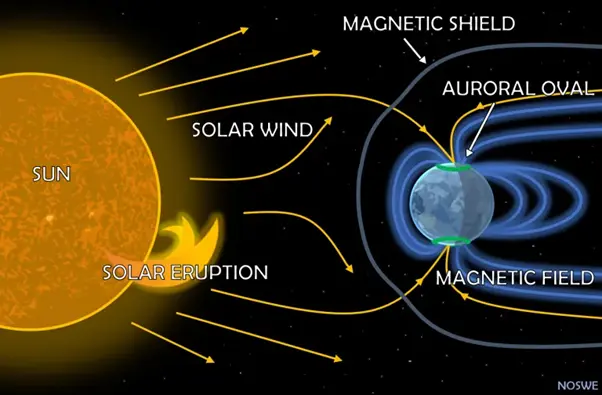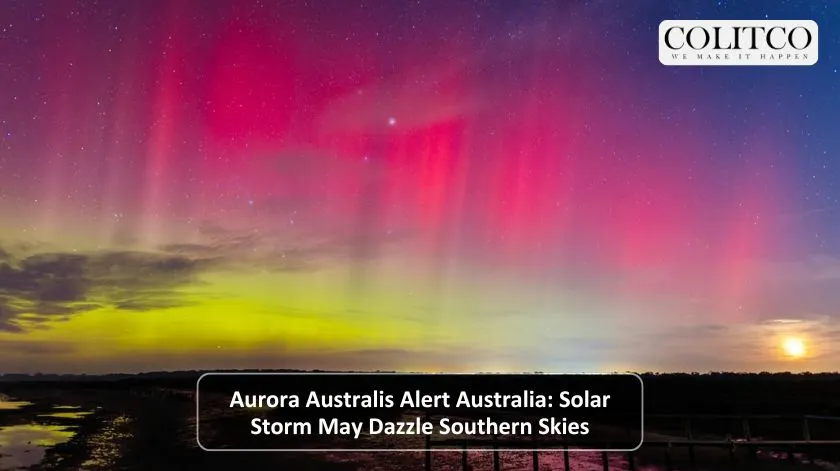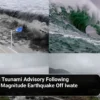Australia is set to witness one of the incredible displays of nature as the severe solar storm, which is currently active, has prompted an aurora australis alert. The issue of this alert came from the Bureau of Meteorology’s (BOM) Space Weather Centre as the geomagnetic storm conditions reached a peak at the G4 level.
The event is the result of three coronal mass ejections (CMEs) from the Sun, which are said to be the most powerful since October 2024, and these eruptive solar phenomena are spilling their charged particles into Earth’s magnetic field, providing the reason for the possible occurrence of the colourful lights that would be seen in the southern sky.
Severe solar storm triggers G4-level aurora australis alert across Australia.
Where Will The Southern Lights Australia Solar Storm Be Visible?
The BOM predicts that the southern lights from the Australian solar storm could even reach the northern coast. Urban areas like Perth and Sydney might get a glimpse of the bands of pink, green and red, provided no clouds are covering the sky.
Matt Woods, who works at Perth Observatory, has stated that there was a “good chance” that bright auroras would be seen over a vast area of Southern Australia. In fact, photographers from the state of Western Australia have already marked today as off-duty for themselves in order the catch the show.
“Rather, it is going to be the case that this will be a good display,” Woods said, nevertheless pointing out that the exact time and intensity depend on the storm’s magnetic orientation.
How Do Solar Storms Create The Aurora Australis?
The aurora australis phenomenon is the result of the interaction between the solar wind and the Earth’s atmosphere. The solar charged particle streams are positive ions (mostly protons) and electrons, which are deflected by the Earth’s magnetic field and become concentrated around the magnetic poles.
In these areas, the solar wind is able to penetrate into the atmosphere and the particle collisions with oxygen and nitrogen ions, which are the main components of the Earth’s atmosphere, occur. The energy released in the collisions comes out as light, and this is what creates the red, green and purple rays in the sky.
Woods likened the whole process to a neon sign, the Sun’s radiation excites the atmospheric gases, making them light up. “The reds and greens are due to oxygen, and the blues and purples are from nitrogen,” he added.

Aurora australis forms when solar wind particles interact with Earth’s atmosphere.
Two-Year Boom Of Auroral Activity Nears Its End
The new occurrence coincides with the end of the two-year maximum of solar activity. The solar activity is at its peak in the solar cycle, which lasts about 11 years. Luke Rasmussen, an astro photographer from Bruny Island, stated that the peak was “causing a lot”.
The green and red lights in the north have been reported in places like Geraldton, Western Australia and Tamworth, New South Wales, which are normally outside the aurora’s reach.
The G5 storm, which occurred over May 2024, was the strongest in 20 years and it clearly demonstrated the intensity of such phenomena. NASA states that the peak of the solar maximum was officially declared in October 2024, but the Sun would still be active for about a year before turning quiet.
What Should You Do To See The Solar Storm Southern Australia Lights?
To witness the aurora of the solar storm in southern Australia, experts recommend going to an area that is very dark, with no pollution from lights, and where the sky is clear. The southern horizon, which is not blocked by anything, gives the best view.
The colours and movements can usually be seen by the naked eye, but long-exposure photography (10-15 seconds) reveals the full brightness of the colours pink, green, and purple. Most auroras are seen for about 15-30 minutes, but sometimes they come back during the night.

Experts suggest dark, clear areas with unobstructed southern horizons for best aurora views.
Why The Aurora Australis Alert Australia Is More Than Just Beauty
Geomagnetic storms that are strong and beautiful nonetheless still pose a risk to contemporary technology. The same solar energy that brightens the sky can also cause disturbances to satellites, power networks and communication channels. In February 2022, around 40 Starlink satellites were deorbited due to a storm, and they burned up in the atmosphere.
Tom Grace, a BOM forecaster, pointed out that space weather warnings are an effective way to prevent damage since they give operators a chance to intercede. “With enough time to alert a satellite, it can be put in safe mode, and a power surge at the grid can be prepared for,” he said.
Also Read: Aurora Australis Alert Issued for Tonight Across Southern Australia
FAQs
Q1: What is the optimal period for viewing the aurora?
The period just after nightfall tonight and very early Thursday will be the peak of G4 conditions, which is when the optimal period for viewing the aurora is.
Q2: Is it possible to see the aurora in northern states apart from southern Australia?
Possibly, in case the weather is favourable, the aurora could be visible as far north as Perth and Sydney.
Q3: What is the duration of an aurora display generally?
The normal duration for such events is 15 to 30 minutes, but they might come back several times during the night.
Q4: Will the solar storm have any influence on technology?
Most definitely, the strongest geomagnetic storms will be detrimental to satellites, power grids and radio communication.












